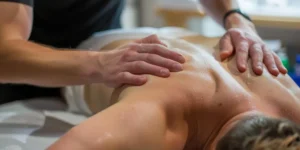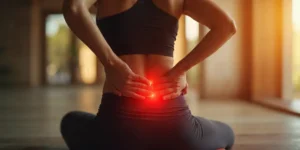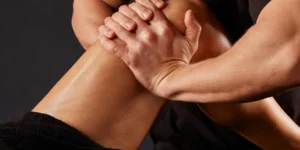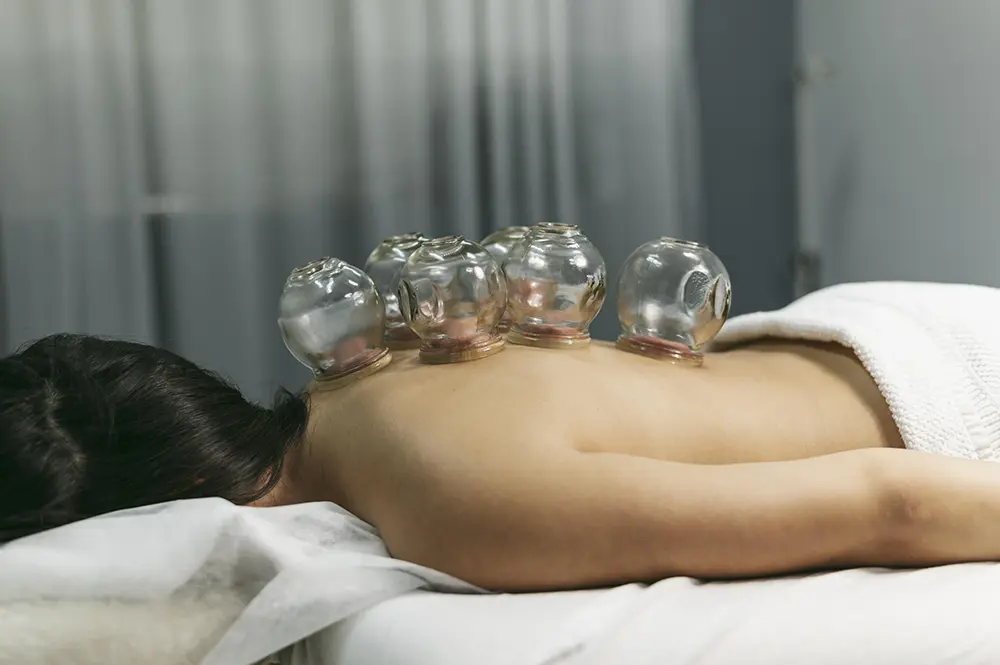In recent years, cupping therapy has surged in popularity, capturing the attention of everyone from world-class athletes seeking muscle recovery to wellness enthusiasts curious about holistic healing. Social media feeds and celebrity endorsements have fueled curiosity about the ancient practice, with vivid images of circular marks becoming almost synonymous with modern recovery routines. Yet, beyond the buzz, a crucial question remains: What does science say about the real cupping therapy benefits, particularly when it comes to inflammation reduction, pain relief, and overall well-being?
As more people consider adding cupping to their self-care arsenal, the need for clear, evidence-based answers is greater than ever. Can this centuries-old technique truly deliver on its promises, or are its reported effects little more than placebo? In this article, we’ll dive deep into the origins, mechanisms, and scientific research behind cupping therapy. Whether you’re a dedicated athlete looking for faster muscle recovery, a skeptic searching for facts, or simply intrigued by alternative health approaches, read on to discover what cupping can — and can’t — do for your health.
The History and Principles of Cupping Therapy
Cupping therapy is far from a recent health trend; its roots stretch back thousands of years across continents and cultures. Ancient Egyptian medical texts, such as the Ebers Papyrus dating to 1550 BCE, reference cupping as a remedy for various ailments. Traditional Chinese medicine (TCM) adopted and refined the practice, incorporating it into holistic health systems aimed at balancing the body’s energy, or “qi.” In the Middle East, the practice — known as “hijama” — has been an integral part of Islamic healing traditions for centuries. The persistence and adaptation of cupping throughout history highlight its perceived value in promoting wellness and treating disease.
The basic principle of cupping involves creating suction on the skin using cups made from glass, bamboo, silicone, or plastic. Traditionally, practitioners would use heat — often from a flame — to create a vacuum inside the cup before quickly placing it on the skin. Modern adaptations include mechanical pumps to generate negative pressure. The suction draws skin and underlying tissue into the cup, which is believed to increase blood flow, loosen muscles, and stimulate natural healing processes. In TCM, cupping is often used along meridian lines to unblock stagnation and restore energetic balance.
There are several distinct types of cupping techniques, each with unique applications and intended outcomes. Dry cupping is the most common method, where only suction is applied. Wet cupping, or hijama, involves making small incisions in the skin before applying the cup, allowing for a controlled release of blood — this technique is thought to expel toxins and promote detoxification. Other variations include moving cupping, where oil is applied to the skin so that cups can be slid along muscle groups, and flash cupping, which involves rapid suction and release for more subtle stimulation. As scientific studies on cupping have increased, researchers continue to investigate how these traditional techniques translate into measurable Cupping Therapy Benefits in modern clinical settings.
These time-honored practices demonstrate how cupping has long been intertwined with holistic health philosophies across civilizations. While contemporary interest often focuses on pain relief or athletic recovery, understanding the diverse cultural origins and principles behind cupping helps contextualize its enduring appeal — and underscores the importance of scientifically evaluating its claims.
Scientific Insights: How Cupping Affects the Body
In recent years, scientific interest in cupping therapy has grown as researchers seek to uncover the physiological mechanisms behind its popularity. Studies using imaging and blood analysis have documented tangible changes in the body post-cupping, such as localized increases in skin temperature and blood flow. For instance, thermographic scans often reveal a marked rise in circulation at the treated site, suggesting that cupping may help deliver nutrients and oxygen more efficiently to injured tissues. These observations support the longstanding belief in many cultures that cupping can facilitate tissue repair and speed up recovery — an appealing prospect for athletes and those exploring alternative therapies for pain relief.
Beyond improved circulation, research points to several biochemical changes triggered by cupping. The suction effect from the cups creates mild trauma or micro-injuries on the skin and underlying muscle, which in turn activates the body’s natural healing responses. This includes the mobilization of immune cells and the release of growth factors that aid in tissue regeneration. A study published in the Journal of Traditional and Complementary Medicine found that participants who underwent cupping showed elevated levels of anti-inflammatory cytokines, proteins that play a key role in reducing inflammation and promoting healing.
Another compelling aspect of cupping’s physiological impact is its potential influence on the nervous system. Some studies suggest that cupping stimulates the release of endorphins — our body’s natural painkillers — which may explain why many patients report significant pain relief after a session. Functional MRI scans have even shown decreased activity in brain regions associated with pain perception following cupping treatments. This dual action — modulating both physical and neurological pathways — sets cupping apart from many other alternative therapies and positions it as a promising adjunct for managing both acute and chronic pain.
While more rigorous research is needed to fully elucidate all mechanisms at play, the current body of evidence indicates that cupping does more than just create visible marks on the skin. By enhancing circulation, jumpstarting tissue repair, and influencing neurochemical processes related to pain, cupping therapy offers a multifaceted approach to health that resonates with those seeking holistic and integrative solutions.
Inflammation Reduction and Immune Support

One of the most intriguing areas of research into cupping therapy revolves around its potential to reduce inflammation and support immune function. Several clinical studies have reported that cupping can lower levels of pro-inflammatory markers, such as interleukin-6 (IL-6) and tumor necrosis factor-alpha (TNF-α), in individuals with chronic pain conditions. For example, a randomized controlled trial examining patients with rheumatoid arthritis found that participants who received regular cupping sessions showed significantly reduced inflammation markers compared to those receiving standard care. This suggests that cupping may provide a complementary approach to chronic pain management by addressing the underlying inflammatory processes.
Theories on how cupping influences the immune system range from mechanical stimulation of the skin and underlying tissues to activation of neuroendocrine pathways. When suction is applied during a cupping session, it creates localized microtrauma, which some researchers believe triggers a cascade of immune responses — akin to a “reset” for overactive or suppressed immune activity. This mild stimulation may enhance circulation, promote lymphatic drainage, and accelerate the removal of cellular waste, thereby supporting the body’s natural healing mechanisms.
Case studies and clinical trials have also highlighted promising outcomes for individuals with chronic inflammatory conditions. In one notable trial involving patients with fibromyalgia — a syndrome characterized by widespread inflammation and persistent pain — participants reported not only decreased pain intensity but also improvements in fatigue and overall well-being after undergoing a series of wet and dry cupping sessions. Similarly, cupping for athletes recovering from sports-related injuries has shown potential to dampen localized inflammation, potentially shortening recovery times and reducing reliance on pharmacological interventions.
While more large-scale studies are needed to fully understand the mechanisms behind these effects, the current body of evidence suggests that cupping therapy could play a valuable role in managing inflammation-driven health challenges. As interest continues to grow among both the general public and the athletic community, ongoing research will help clarify how cupping can best be integrated into holistic strategies for chronic pain management and immune support.
Pain Relief for Chronic and Acute Conditions
Among the most celebrated cupping therapy benefits is its potential to relieve pain, both acute and chronic. A growing body of research has focused on conditions like chronic lower back pain, neck tension, shoulder strain, and even migraines. For example, a 2021 meta-analysis published in the journal *Complementary Therapies in Medicine* found that patients with chronic low back pain who received cupping reported significantly reduced pain intensity compared to those receiving standard care or no intervention. Similarly, individuals suffering from tension headaches and migraines have experienced notable relief, with some studies suggesting that regular cupping sessions may decrease the frequency and severity of attacks.
The distinction between short-term and long-term pain management outcomes is important when assessing evidence-based wellness approaches. Many studies highlight that cupping therapy provides rapid relief for acute pain flare-ups — sometimes within a single session. This can be particularly appealing for those seeking natural healing methods without reliance on pharmaceuticals. However, the research also suggests that consistent, repeated cupping sessions are often necessary to achieve lasting improvements in chronic pain conditions. For example, athletes with repetitive strain injuries have reported sustained benefits over several weeks of ongoing treatment, pointing to cupping’s role as a complementary therapy rather than a one-time fix.
When compared to conventional pain relief methods such as medication, physical therapy, or injections, cupping stands out for its non-invasive nature and low risk of side effects. While medications may offer quick symptom relief, they often come with risks of dependency or adverse reactions. In contrast, cupping encourages the body’s own healing responses — such as increased blood flow and endorphin release — making it an attractive option for individuals prioritizing natural healing methods. That said, experts generally recommend integrating cupping with other evidence-based wellness practices for optimal results, particularly in cases of severe or complex pain.
Ultimately, while cupping therapy does not replace conventional medical care, the mounting evidence supporting its use for pain relief cannot be overlooked. As more health enthusiasts and professionals seek holistic solutions, cupping is gaining traction as a safe, effective adjunct for managing discomfort and improving quality of life. Individuals considering this therapy should consult with healthcare providers to ensure a tailored approach that fits their unique health needs.
Mental Well-being and Stress Reduction
While cupping therapy is often spotlighted for its physical benefits, a growing body of research and anecdotal evidence points to its positive impact on mental well-being and stress reduction. Several small-scale studies have observed that individuals who undergo regular cupping sessions report heightened feelings of relaxation, reduced anxiety levels, and an improved sense of overall calm. This may be partly attributed to the “pause” effect — the dedicated time spent in a tranquil environment, focusing on self-care, which can itself be profoundly restorative.
Delving deeper, some researchers propose that cupping’s effects extend beyond simple relaxation. The therapy may influence neurological pathways that regulate mood and stress responses. For instance, the mild suction and pressure applied during cupping could trigger the release of endorphins and other neurochemicals associated with pain relief and positive emotions. Additionally, there is preliminary evidence suggesting that cupping may help balance cortisol — the body’s primary stress hormone — potentially leading to a more stable and resilient stress response over time.
Testimonials from patients further illuminate these benefits. Many describe experiencing a “mental reset” after a session, reporting sharper clarity, better sleep quality, and even relief from symptoms of chronic stress or burnout. One office worker shared how weekly cupping helped her manage workplace anxiety and improved her focus, while an athlete noted that his pre-competition nerves became more manageable after integrating cupping into his recovery routine. These real-world accounts, though subjective, add valuable context to the scientific findings.
While more rigorous clinical studies are needed to fully unravel the mind-body connection fostered by cupping, the existing evidence and lived experiences suggest it can be a meaningful addition to holistic mental health strategies. For those seeking non-pharmaceutical approaches to manage everyday stress and support emotional balance, cupping therapy offers both ancient wisdom and modern promise.
Skin Health and Circulation Improvements
Among the many cupping therapy benefits that have gained attention in recent years, its impact on skin health and circulation stands out. Several studies have explored how regular cupping sessions may enhance skin elasticity, helping to improve firmness and reduce the appearance of cellulite. For instance, a study published in the journal *Complementary Therapies in Clinical Practice* found that women who received cupping therapy on their thighs twice a week for five weeks showed measurable reductions in cellulite severity compared to a control group. The gentle suction created by the cups is believed to stimulate blood flow and lymphatic drainage, which can help flush out toxins and support the body’s natural healing processes.
Increased circulation is one of the core mechanisms through which cupping therapy benefits skin rejuvenation. When suction is applied, capillaries expand and more oxygen-rich blood flows to the affected area. This influx of nutrients not only promotes a healthy glow but also accelerates the repair of damaged tissues. Dermatologists have observed that patients with conditions such as acne scars or slow-healing wounds sometimes experience faster recovery and improved skin texture after a series of cupping treatments. Anecdotal evidence from holistic clinics also points to improved skin hydration and reduced puffiness, likely due to enhanced microcirculation.
Beyond aesthetics, cupping therapy has been used in dermatological applications for managing certain skin disorders. For example, some clinical reports suggest that patients with psoriasis or eczema may benefit from wet cupping — a technique where superficial incisions are made before the application of suction — to remove small amounts of blood and purportedly reduce inflammation. While these results are promising, experts caution that more rigorous studies are needed to establish standardized protocols and ensure safety for sensitive skin types.
Ultimately, while cupping is not a miracle cure for every skin concern, its potential for boosting circulation and supporting skin health is an exciting area of ongoing research. Individuals considering cupping for dermatological reasons should consult with both their healthcare provider and a certified practitioner to determine if this therapy aligns with their specific needs and skin sensitivities. As the evidence base grows, cupping may well become a valuable addition to integrative approaches for skin care and healing.
Safety, Risks, and Best Practices
While cupping therapy is generally considered safe when performed by trained professionals, it is not entirely without risks. Common side effects include temporary skin discoloration, mild soreness, and occasional blistering or bruising at the site of the cups. These marks are usually harmless and fade within a week or two, but they can be alarming for those new to the practice. In rare cases, more serious complications such as burns (from fire cupping), skin infections, or aggravation of pre-existing conditions have been reported in medical literature. Individuals with certain health issues — including bleeding disorders, severe skin diseases, or who are pregnant — should consult their healthcare provider before undergoing cupping.
To minimize risks, best practices emphasize that cupping should only be performed by practitioners with proper training and certification. Qualified providers understand anatomical landmarks, hygiene protocols, and how to tailor treatments to individual needs. For example, the National Certification Commission for Acupuncture and Oriental Medicine (NCCAOM) offers credentialing for those specializing in traditional East Asian therapies, including cupping. This ensures that practitioners adhere to standardized procedures and stay up-to-date with safety guidelines.
Finding a reputable practitioner is crucial to experiencing the full benefits of cupping while avoiding unnecessary complications. Ask prospective therapists about their credentials, experience with cupping techniques, and familiarity with treating your specific health concerns. Look for practitioners affiliated with professional organizations or licensed by state health boards. It’s also wise to read reviews or seek referrals from trusted sources, such as primary care providers or athletic trainers familiar with integrative therapies.
Ultimately, transparent communication between you and your practitioner is essential. Be sure to disclose your complete medical history, including medications and any allergies, before starting treatment. If you notice any unexpected symptoms — such as excessive pain, swelling, or signs of infection — contact your practitioner promptly. By following these best practices and prioritizing safety, you can make informed decisions about incorporating cupping therapy into your wellness routine.
Weighing the Evidence: Is Cupping Therapy Right for You?
Cupping therapy benefits have captured the interest of health enthusiasts and professionals alike, with scientific studies suggesting positive effects on muscle recovery, pain relief, inflammation reduction, mental well-being, and skin health. Research highlights mechanisms such as increased circulation, endorphin release, and immune modulation that could explain these outcomes. Athletes, chronic pain sufferers, and those seeking holistic wellness have reported improvements ranging from reduced muscle soreness to enhanced relaxation. While these findings are promising, it’s important to note that much of the evidence is preliminary, with more robust clinical trials needed to clarify the full extent and reliability of cupping therapy benefits.
For individuals considering adding cupping to their wellness routine, it’s crucial to approach this therapy with informed caution. Always seek qualified practitioners who follow safety guidelines and discuss any underlying health conditions with your healthcare provider beforehand. While cupping can be a valuable complementary approach for some, it should not replace conventional medical care. As research evolves, staying updated on new findings will help you make the best choices for your health and well-being.







